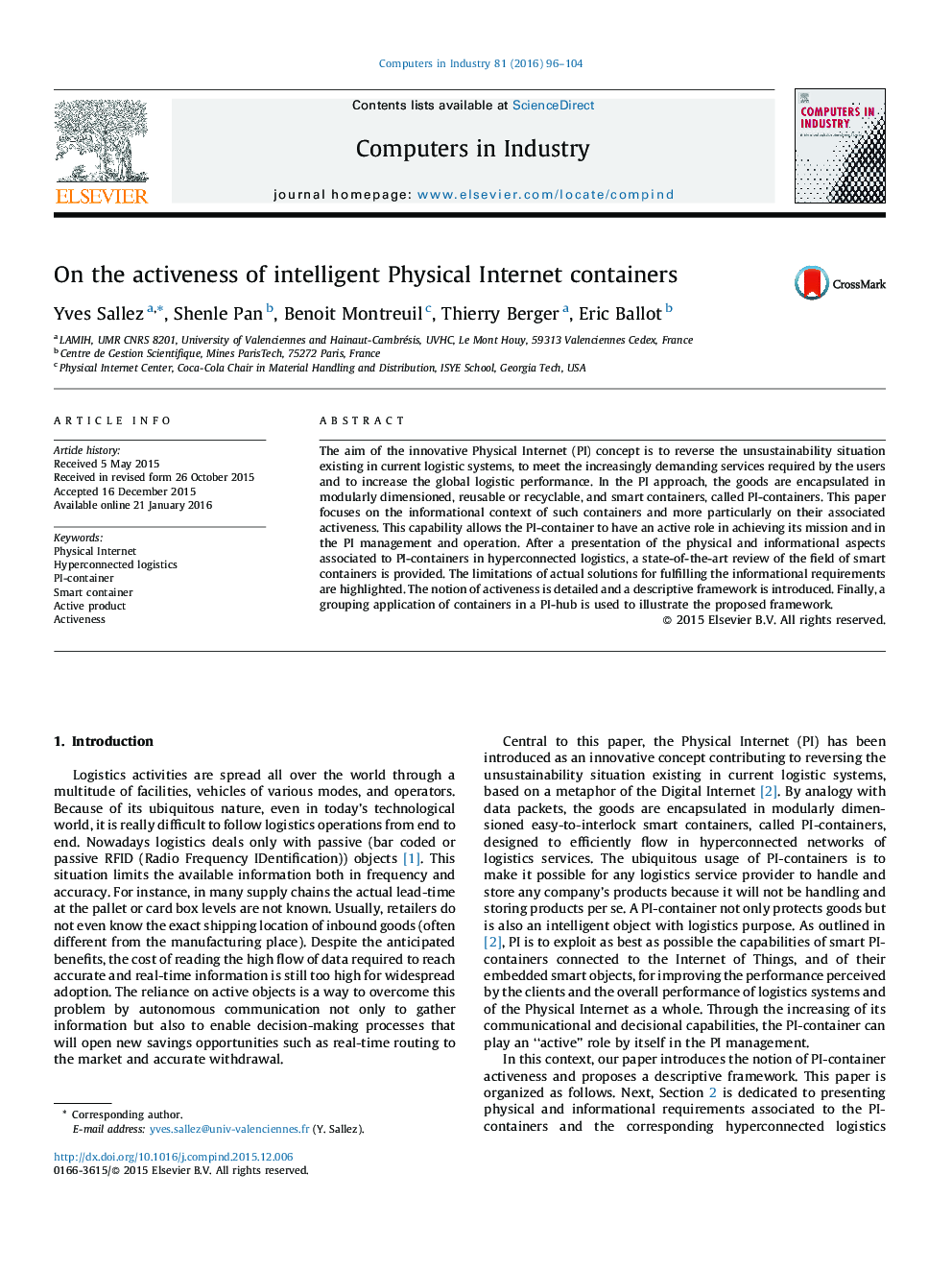| Article ID | Journal | Published Year | Pages | File Type |
|---|---|---|---|---|
| 508577 | Computers in Industry | 2016 | 9 Pages |
•The paper focuses on the design of PI-containers and on their associated activeness.•The Physical Internet aims to reverse the unsustainability situation existing in logistic systems.•PI-container can play an active role for its mission and in the PI management.•The activeness must be analyzed according to a recursive view.•A grouping application of containers in a PI-hub is used to illustrate the proposed model.
The aim of the innovative Physical Internet (PI) concept is to reverse the unsustainability situation existing in current logistic systems, to meet the increasingly demanding services required by the users and to increase the global logistic performance. In the PI approach, the goods are encapsulated in modularly dimensioned, reusable or recyclable, and smart containers, called PI-containers. This paper focuses on the informational context of such containers and more particularly on their associated activeness. This capability allows the PI-container to have an active role in achieving its mission and in the PI management and operation. After a presentation of the physical and informational aspects associated to PI-containers in hyperconnected logistics, a state-of-the-art review of the field of smart containers is provided. The limitations of actual solutions for fulfilling the informational requirements are highlighted. The notion of activeness is detailed and a descriptive framework is introduced. Finally, a grouping application of containers in a PI-hub is used to illustrate the proposed framework.
